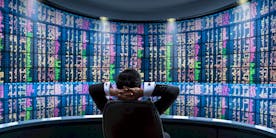10 Best Dividend Stocks Worth Buying in 2025
All products and services featured are independently selected by WikiJob. When you register or purchase through links on this page, we may earn a commission.
61% of retail investor accounts lose money when trading CFDs with eToro. You should consider whether you understand how CFDs work, and whether you can afford to take the high risk of losing your money.
- What Are the Best Stock Dividends to Buy?
empty
empty
empty
empty
empty
empty
empty
empty
empty
empty
- What Are Dividend Stocks?
empty
empty
- How Do Stock Dividends Work?
- What to Consider When Buying Stock Dividends to Invest In
empty
empty
empty
empty
empty
empty
- Frequently Asked Questions
- Final Thoughts
What Are the Best Stock Dividends to Buy?
Lowe’s Companies (NYSE:LOW)
The world-famous home improvement company is a strong contender for Dividend King, having raised dividend payments almost every single year since they went public in 1961.
In fact, thanks to sustained growth and movement into different markets, dividend payments have risen by more than 500% in the last decade.
- Share Price – $186.44 (this will vary, please check for current share price)
- Dividend Yield – 2.36%
- Three-Year Dividend Growth Rate – 22.90%
Proctor & Gamble (NYSE:PG)
Proctor & Gamble is a long-established household products corporation built on branded goods. P&G’s products include beauty, grooming, healthcare, baby care, feminine cars, and cleaning products.
For those looking at sustainable growth, P&G has increased dividend payouts for 67 consecutive years.
- Share Price – $150.61 (this will vary, please check for current share price)
- Dividend Yield – 2.50%
- Three-Year Dividend Growth Rate – 6.46%
Chevron (NYSE:CVX)
While it might not be the greenest stock to invest in, if you want to build a sustainable portfolio, adding the second-largest oil company in the US is a solid choice.
Founded in 1879, the Chevron dividend payouts have increased for 36 consecutive years.
- Share Price – $155.87 (this will vary, please check for current share price)
- Dividend Yield – 6.16%
- Three-Year Dividend Growth Rate – 5.72%
Target (NYSE:TGT)
The well-known American retailer is the seventh largest in the US and has performed well enough through its chain of hypermarkets and discount stores to increase dividend payouts for more than 50 years.
As expected, the stock price is relatively high – but the dividends continue to grow, as does the stock price, so it might be worth considering.
- Share Price – $110.36 (this will vary, please check for current share price)
- Dividend Yield – 3.99%
- Three-Year Dividend Growth Rate – 17.84%
Starbucks (NYSE:SBUX)
When you think of coffee, you’ll think of Starbucks – and they are the dominant brand in coffee with more than 37,000 global stores.
They haven’t reached the dizzying heights of Dividend Kings or even Dividend Aristocrats, but they have increased their dividends to shareholders since 2010.
- Share Price – $94.00 (this will vary, please check for current share price)
- Dividend Yield – 2.43%
- Three-Year Dividend Growth Rate – 8.93%
Brookfield Infrastructure (NYSE:BIPC)
Brookfield is a corporation that owns infrastructure in water, utilities, communications and energy. It is a relatively unknown company that has managed to keep steady cash flows that are both inflation and recession-resistant.
Brookfield owns estate assets in Canary Wharf in the UK and in Dubai, and while it counts more as a growth stock because it is new rather than established, the dividend yield and low stock price are attractive for investors.
- Share Price – $27.55 (this will vary, please check for current share price)
- Dividend Yield – 5.55%
- Three-Year Dividend Growth Rate – No growth – IPO
American Express (NYSE:AXP)
Financial companies are often the most attractive stocks for a portfolio, and American Express is one of the best-known consumer and business lending companies in the world.
Amex has a decades-long track record of both maintaining and increasing its dividend payouts to shareholders, even if the dividend yield is currently sitting below the market average of about 2.00%.
- Share Price – $143.52 (this will vary, please check for current share price)
- Dividend Yield – 1.67%
- Three-Year Dividend Growth Rate – 10.49%

Coca-Cola (NYSE:KO)
Coca-Cola has been a sustainable choice for investors for many years, increasing dividend payments for more than 50 years.
While some investing gurus might consider that the public focus on health and avoiding sugary drinks might damage the stock price, that doesn’t seem to be happening. They also pay out more than 72% of their profits to their shareholders.
- Share Price – $55.64 (this will vary, please check for current share price)
- Dividend Yield – 3.31%
- Three-Year Dividend Growth Rate – 3.57%
Microsoft (NYSE:MSFT)
Microsoft might not be the biggest name in technology anymore. Still, they have a strong offering that has remained consistent – and a stock price that reflects that position.
Microsoft is a company that has increased dividends for more than 18 years, and in fact, there has been an 11.45% growth in dividends for the last ten years.
- Share Price – $330.53 (this will vary, please check for current share price)
- Dividend Yield – 0.91%
- Three-Year Dividend Growth Rate – 10.06%
Verizon Communications (NYSE:VZ)
Verizon is one of the most prolific communications companies, offering TV, internet, mobile and phone services to the US and beyond.
First established as Bell Atlantic in 1984, Verizon is the second-largest mobile carrier in America and has increased dividend payments for 19 years.
- Share Price – $34.30 (this will vary, please check for current share price)
- Dividend Yield – 7.76%
- Three-Year Dividend Growth Rate – 1.99%
What Are Dividend Stocks?
Dividend stocks are a popular addition to investor portfolios because they offer two ways of making profits and income:
- An increase in the share price
- Regular cash distributions of company profits
While not all stocks offer dividends, there are plenty that do, and you can build a diversified portfolio based on the best dividend stocks available.
What Are Stocks?
Corporations issue stocks to raise funds, and units of stocks are called shares. Investors who buy stocks own a security that represents a proportional ownership of the company.
Stocks are usually bought and sold on the relevant stock exchange, using a broker.
Shareholders are not only entitled to a proportion of the profits and assets of the corporation based on the number of shares that they own, but they can also vote in shareholder meetings and help make decisions about the business.
The first release of stock is called the Initial Public Offering (IPO), and companies can issue more stock later to raise more funds if they need to – they can also do stock buybacks to limit the amount of stock ownership by investors.
The idea of stock ownership is that an investor buys into a business with the aim that it is going to grow, making a profit when the shares are sold (which is often a long-term investment goal).
Shareholders can also get regular payments, called dividends, based on the number of shares that they own – these can be a passive income stream.
What Are Dividends?
Not all corporations on the financial markets offer dividends on their stocks, but the companies that do tend to be larger, international businesses. For example, Microsoft offers dividend stocks, while Amazon does not.
Dividend payments are usually made quarterly, but some corporations pay monthly, semi-annually, or annually.
Dividend payments are a percentage of profits based on the proportion of shares that you own.
How Do Stock Dividends Work?
Dividends are payouts that the Board of Directors and management of the company choose to disburse to shareholders.
The amounts and frequency of these dividend payments are decided by the corporation, as is how much of the capital is held back to invest in growth and support the operations of their business.
Shareholders can receive dividends as cash or as additional stock – this can then be reinvested to compound the value of their dividend payouts.
Getting dividend payments does not usually require any action from the investor; it is handled by the broker that you used to purchase the stock. The most you will need to do is decide whether you are going to receive the dividends as cash or as additional stock.
Choosing the right dividend stock to invest in can be challenging, but looking at the dividend yield is one of the best ways to decide. This is a percentage showing the payout from the last 12 months.
Reliability is also important, and the best investments will be the ones that are considered Dividend Kings – corporations that have maintained and grown their dividend payments for more than 50 years.
Dividend Aristocrats is another list that should be considered – these have grown their dividend payments for at least 25 years.
What to Consider When Buying Stock Dividends to Invest In
Decide the Amount to Invest
Every investor has a different goal, and a different budget to work with.
The amount that you want to invest in your dividend stock portfolio will depend on many things. Still, the most important thing to consider is that you should never invest more than you can afford to lose.
Investing is a risk, and the value of stock can go down as well as up.
The Frequency of the Dividends
Dividend payouts are usually made quarterly, although some stocks pay out on a different schedule. The board of directors decides this and can sometimes include special payments of additional stock.
Quarterly payments are not always made simultaneously from different companies, which can help make the dividends you receive more regular than quarterly.
The Value of the Dividends
The value of dividends is one of the most important considerations to make. Ideally, you want to get as much as you can from the company in payouts, but it isn’t as simple as looking at the highest dividend yield.
Long-term investment strategies should be adhered to, so you will want to ensure that you are choosing dividend stocks that have long-term growth.
The Risk of the Company
In a similar way to deciding how much to invest in a company, the risk profile of the company is a personal choice of the investor. In the most general terms, blue-chip companies, multinational conglomerates, and businesses that have seen sustainable growth for many years are less risky, while newer companies and IPOs might be considered to be riskier options (with the potential for higher returns, of course).
The Financial Performance of the Company
Financial performance is not guaranteed, but you can check the following parameters when it comes to dividend payouts:
- Payout ratio of less than 60-70%
- History of increases, especially during recessions
- Steady growth in revenue and earnings
- Debt-to-equity ratio of less than 2.00
The Prospective Future of the Company
You are looking for growth in your investment; you want a long-term gain from increased stock prices.
Companies that are likely to grow in the future are likely to have shown growth in the past, and they will have some competitive advantages like a powerful brand image or some sort of proprietary technology or service.
Consistent annual growth usually increases by 5–15% – this is usually considered to be sustainable.
Frequently Asked Questions
The most reliable dividend stocks are usually considered to be the ones that are on the Dividend Kings list – stocks like Verizon, Coca Cola and UPS are good options.
Companies that pay dividends on stocks will pay dividends in 2023 – and if you have bought in before the ex-dividend date for the next payment, you will receive a proportion of the dividend payment according to the shares you hold.
Most advisors would suggest that investing in technology is a way to get in on the stocks that are likely to boom in 2023, but while Amazon, Alphabet In (Google/YouTube), Tesla and Meta might be attractive, remember that the high stock price might be a barrier, and not all these companies pay dividends.
The stocks to buy and hold will depend on your own goals and risk – but the below are popular:
- Home Depot
- Coca Cola
- Proctor & Gamble
- JP Morgan Chase
- Target
- Merck & Co.
Unless you have a six-figure sum to invest in a single stock, the best way to build up to $500 monthly in dividends is to buy dividend stocks from different companies across several sectors.
Choosing to receive their dividends as additional stock will compound the yield, which could grow to $500 in passive income from dividends over time.
With an investment of $1 million, you will need an average dividend yield of at least 4.8% (and monthly dividend payment dates on a diversified portfolio) to get $4,000 in passive income.
The higher the dividend yield, the less you will have to invest to make $3,000 a month, but there is a high risk in the highest-yielding dividend stocks.
You will need at least six figures, and even a million, but you will still have to consider your investment choices.
Final Thoughts
If you are planning to invest in stocks to build a diversified portfolio for long-term profits, then choosing dividend-paying stocks can add extra profit in regular cash payments or additional stock.
Choosing the right stock to invest in will depend on your goals and risk preferences, as well as the financial security, growth potential and performance of the businesses you plan to invest in.
With enough research, investors can create passive income from dividends alongside their long-term savings goals.
61% of retail investor accounts lose money when trading CFDs with eToro. You should consider whether you understand how CFDs work, and whether you can afford to take the high risk of losing your money.





